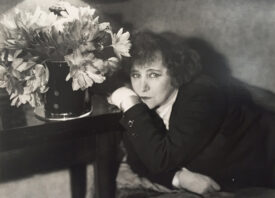Search this site
Here’s How to Jumpstart Your Online Photography Print Sales in 2021 (Sponsored)

Even during the challenging circumstances of the past year and a half, art buyers found ways to bring photography into their lives. Last year, for instance, a Richard Avedon print sold at a Christie’s auction for a record-breaking $1.8 million. In December, a large-scale Ansel Adams photo set a new auction record at Sotheby’s, going for $988,000. This April, early photographs by William Henry Fox Talbot hit a record $2 million at auction.
Outside of the big auction houses, fine art print sales took on new meaning for today’s photographers as well. As art buyers moved online, some teamed up with colleagues to organize massive group print sales, and others built side-hustles by opening their own shops. From old-fashioned silver gelatin to digital C-prints, fine art prints have always been a fixture in the photo industry, but perhaps they mean now more today than they ever did–for both the creator and the buyer. Here are our tips for selling more work in 2021.
Join a marketplace. While your personal website can serve as a point of departure, signing up for a dedicated art marketplace like Fine Art America can help you expand your reach. They already have a built-in network of millions of buyers who visit the site weekly, and they offer sales and marketing tools to help launch your business. Fine Art America sets a base price for the products they make, but you set your own print prices by adding a custom markup.

Fine Art America also sells artwork in over 150 retail locations in the United States and Canada, and they offer opportunities for massive exposure throughout the year. Right now, for example, they’re hosting a billboard contest: anyone can create a free account and upload three photos for consideration. The public will vote, and every image that gets at least 100 votes will be featured on the Fine Art America Instagram page as a finalist. In September, the jury will select twenty winners to appear for at least one month on billboards in cities across the United States, to be seen by millions of people.

Engage your audience on social media. Not all of your followers will buy work right away, but it’s important to cultivate those relationships and plant a seed for the future. You can post sneak peeks of works in progress or offer exclusive early-bird deals to your audience on Instagram. You can even trade posts with other photographers selling prints; you post a gallery of their images, and they share a gallery of yours. From there, add relevant hashtags like #printsforsale and #printsforyourhome, and include a “swipe up” link on your Stories going directly to the page where people can buy.

Find the right printer. Collectors are discerning, so do your research to find a printer that’ll show your work at its best. Unless you have a top-of-the-line printer at home, find a professional to do this for you. For example, as home to the largest print-on-demand fulfillment network on the planet, Fine Art America sells museum-quality prints on paper, canvas, fabric, metal, wood, and more. After you select the product you want, they’ll take care of the printing, framing, stretching, and shipping. They’ll handle the customer service end of things, and you’ll focus on the creative part.
Depending on your needs, you might also choose to collaborate with a local printer who understands your vision and is willing to work with you to achieve a specific look. You can still list your original artwork through Fine Art America. If you go this route, interested buyers will contact you directly from your profile, and you’ll handle the transaction, printing, and shipping. In this case, you’d also keep 100% of the sale, commission-free.

Take professional product photos. Buyers want to visualize what your work will look like in their homes, so capture some interior shots with your framed prints. You can also grab close-up photos that show the quality of the paper or the vibrancy of the colors in the finished product. Set up a shoot at home (or a friend’s home), and think like a stylist or interior designer to show your work in context. Choose props and accessories that highlight rather than distract from the beauty of the print itself.

Curate your portfolio. Consider what you’re uploading and sharing with potential buyers. While it can be tempting to sell everything and cover all your bases, a more targeted approach often works better. Only list work that represents who you are as an artist; adding sub-par images or images that don’t fit your vision will only dilute your portfolio and distract from your unique selling point. The most successful portfolios are usually the ones that are consistent and instantly recognizable, with a clear point of view.

Stay accessible. There’s an old saying in the art world: “Everyone’s a collector.” Treat everyone with kindness and professionalism, and answer questions and inquiries on time. If you’re in touch with the buyer, ask about what they’re looking for and where they plan to display the work. Invite people to any open studios or events on your schedule.
It can also help to offer a number of different products for sale. Not everyone can afford a limited edition giclée print, but they might be interested in posters, greeting cards, tote bags, or phone cases (Fine Art America offers all those and more). Listen to your audience, and show them you value their input and their business.

Submit to fairs and festivals. Even if you sell most of your prints online, art fairs and photo festivals offer opportunities for networking and building relationships with gallerists, curators, and collectors. While many fairs accept applications from galleries exclusively, some welcome submissions from artists, so check your local listings. The Other Art Fair, the Superfine Art Fair, and Roy’s Art Fair, for instance, regularly accept submissions from artists.
You can also check out galleries in your location or niche and apply to any open calls they have throughout the year. Group shows look good on your resume, and they can also help you get your foot in the door with a gallery down the road. Plus, many of these exhibitions and fairs get write-ups in the press, drawing more attention to your work.

Pitch a website. Speaking of press, many arts and photography websites accept submissions year-round. Browse the web for sites and magazines that fit your niche and aesthetic; you can start with Feature Shoot’s guide to 50 websites accepting submissions. Instead of applying everywhere, target your approach to just a few platforms that you feel align with your vision and target audience. Check out the kind of work they post and the reach they have on social media to determine if they’re a good fit. Get covered by the right website, and you could ultimately catch the eye of a gallerist or curator.

Start a newsletter. Once you start building up your contact list (galleries, collectors, clients, etc.), launch an email newsletter to keep them informed about your latest projects. Fine Art America even has a tool to help you set up your e-newsletter in minutes. Give your newsletter subscribers something they can’t find anywhere else, such as behind-the-scenes photos from a recent shoot. To stay at the top of their inboxes, find ways to inspire and engage them throughout the year, and consider giving them “first dibs” when you release new prints.

Follow up. After making a sale, send a “thank you” and check in with the buyer. You never know who might hold the key to the next step in your career. When Edward Steichen was twenty years old, for instance, he sold three prints to Alfred Steiglitz, who later exhibited and published his work widely. Buyers can be some of your most valuable supporters, so keep in touch with them to stay front of mind.



